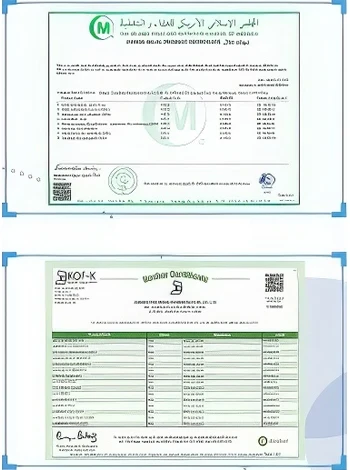



Understanding the Hazards of Sodium Chlorate and Safe Handling Practices
Hazards of Sodium Chlorate Understanding the Risks
Sodium chlorate (NaClO3) is a widely used chemical compound, primarily known for its applications in herbicides, bleaching agents, and industrial processes. While sodium chlorate plays a crucial role in various industries, it is essential to understand the potential hazards associated with its use. This article aims to explore the risks tied to sodium chlorate, including its chemical properties, health implications, and environmental concerns.
Chemical Properties and Uses
Sodium chlorate is a white crystalline solid that is highly soluble in water. It is a strong oxidizing agent, which means it can readily react with other substances, especially organic materials. Because of this property, sodium chlorate is frequently used in agriculture to control weeds and pests. Additionally, it serves as a bleaching agent in the paper and textiles industries, and it is used in the production of chlorine dioxide for water treatment.
Health Hazards
1. Toxicity Sodium chlorate is considered toxic, and exposure can lead to various health problems. Inhalation of its dust or mists can result in respiratory issues, including irritation of the nose and throat. If ingested, sodium chlorate can cause gastrointestinal distress, including nausea, vomiting, and abdominal pain.
2. Methemoglobinemia One of the significant health risks associated with sodium chlorate is its potential to cause methemoglobinemia, a condition where hemoglobin is altered, reducing its ability to carry oxygen in the bloodstream. Symptoms can include cyanosis (bluish coloration of the skin), fatigue, and shortness of breath. Severe cases may require medical intervention, including the administration of methylene blue, a treatment for this condition.
3. Skin and Eye Irritation Direct contact with sodium chlorate can lead to skin burns, irritation, and allergic reactions. Moreover, if the chemical comes into contact with the eyes, it can cause severe irritation, redness, and potential damage to the cornea.
sodium chlorate hazards

Environmental Risks
1. Aquatic Toxicity Sodium chlorate poses risks to aquatic ecosystems. It's harmful to fish and other aquatic organisms, even at low concentrations. Runoff from agricultural fields or leaks during industrial processes can pollute water sources, affecting biodiversity and disrupting food chains.
2. Soil Contamination Over time, the accumulation of sodium chlorate in soils can lead to the degradation of soil quality, affecting its microbial communities and overall health. It can also hamper the growth of plants, particularly non-target species, which are essential for maintaining ecosystem balance.
Safety Precautions
Given its potential hazards, proper safety measures are crucial when handling sodium chlorate
- Personal Protective Equipment (PPE) Workers should wear appropriate PPE, including gloves, goggles, and respiratory protection, to minimize exposure. - Proper Storage Sodium chlorate should be stored in cool, dry places away from organic materials and reducing agents, as these can trigger explosive reactions. - Emergency Procedures In case of spills or exposure, it’s important to have clearly outlined emergency procedures, including the availability of eyewash stations, first aid kits, and training for handling such incidents.
Conclusion
Sodium chlorate is a valuable chemical with numerous industrial applications, yet its hazards cannot be overlooked. Understanding its health implications and environmental impacts is essential for safe usage. Industries that utilize sodium chlorate must enforce stringent safety measures and promote awareness among workers to mitigate the associated risks. Through education and proper handling practices, the dangers of sodium chlorate can be effectively managed, ensuring both human health and environmental safety are prioritized. As the use of such chemicals continues, ongoing research and regulation will be necessary to safeguard public health and the planet.
-
Why Sodium Persulfate Is Everywhere NowNewsJul.07,2025
-
Why Polyacrylamide Is in High DemandNewsJul.07,2025
-
Understanding Paint Chemicals and Their ApplicationsNewsJul.07,2025
-
Smart Use Of Mining ChemicalsNewsJul.07,2025
-
Practical Uses of Potassium MonopersulfateNewsJul.07,2025
-
Agrochemicals In Real FarmingNewsJul.07,2025
-
Sodium Chlorite Hot UsesNewsJul.01,2025










